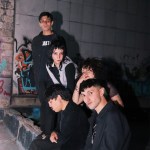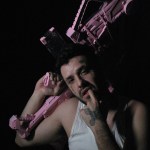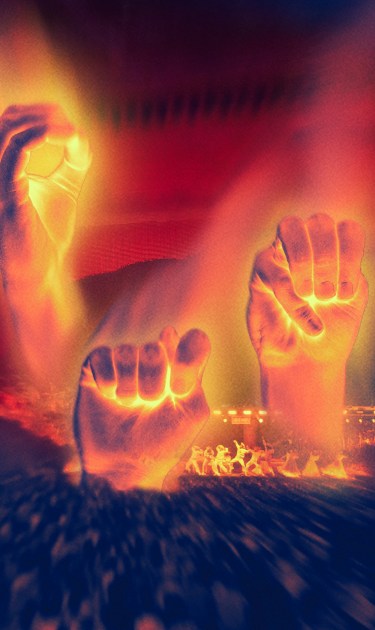Music festivals and concerts are renowned for channeling the emotional power of music through movement. Whether it’s the pounding rhythm, an electrifying light show, or the energy of a crowd, the experience is sensory from start to finish. But what happens when sound itself isn’t accessible? For the deaf and hard-of-hearing community, music can still be powerful through vibrations, lyrics, and sign language. That’s where interpreters come in, bridging worlds and ensuring music reaches everyone. At a concert, the interpreter’s movements are fast, the facial expressions are intense, and anyone can tell the songs are fun. Because, as noted in a VICE article on concert sign language interpreters, they aren’t just translating — they’re performing themselves, channeling music in ways that resonate far beyond words.
Still, live shows often fall short when it comes to accessibility. Many venues lack interpreters or visual alternatives, such as captioning, which excludes deaf fans from fully experiencing the event. This gap is rooted in systemic ableism — the assumption that all audiences engage with music in the same way. Performance interpreters challenge that norm, reshaping what inclusion looks like and proving that music can be shared by everyone.
But there’s a larger movement in performance spaces growing, one rooted in the belief that access to culture, joy, and music is a right, not a privilege. Around the world, interpreters are not just translating lyrics; they’re dismantling barriers and challenging ableism in spaces that were never designed with deaf communities in mind. There’s no official certification for concert interpreting — no single path, no guidebook. Each interpreter has to carve their own way through a blend of performance, translation, and advocacy. But the demand is growing, and so is the movement.
It’s a sentiment that resonates with Salvador Garcia, who began interpreting professionally just two years ago and recently worked his first major event: BottleRock Napa Valley. Through a booking agency, he was invited to join a team making performances accessible to deaf concertgoers. That weekend, Garcia interpreted sets for artists like Carin León, Green Day, Justin Timberlake, and Sofi Tukker. As a deaf interpreter, Garcia worked alongside hearing interpreters, who relayed lyrics and music cues in real-time so he could present them in American Sign Language (ASL). “Teamwork is everything,” Garcia tells Remezcla. Preparation often starts weeks in advance through group chats and Zoom rehearsals. The interpreters strategize who will cover which stage, how to rotate, and whether setlists are available. “Sometimes we Shazam the song live if we don’t have it,” he says with a laugh.

One challenge for Garcia, especially during Spanish-language sets like León’s, is managing the overlap between ASL and Mexican Sign Language. “Since I speak Spanish, it’s easy to mix the two. But we always prep in English to stay consistent,” he shares. Garcia, who teaches ASL at a community college and holds a master’s degree in sign language education, says qualifications matter: “It’s not just about knowing signs. You have to deliver meaning accurately and with emotion.” What matters most to him? Accessibility. “Sometimes deaf people feel disconnected at concerts without an interpreter. But when we’re there, it changes everything.”
At festivals, he says the visual and physical elements help deaf attendees connect. “You feel the bass in your body. It’s like you’re plugged into the music world,” Garcia explains. He often receives hugs, thank-yous, and photo requests. “I want people to remember this is a service that should always be provided,” he notes.
In Mexico City, Priscila Santillán Ortega also sees the growing demand, bridging sound and sign. Though she holds a master’s in astrophysics, her path changed when she realized how little science content was available in sign language. “I began interpreting because I wanted to make science accessible. Then I discovered music could be translated too,” she says in Spanish. She has since interpreted for artists like Eden Muñoz, Mon Laferte, Emmanuel, and El Tri, working festivals in Mexico like Tecate Pa’l Norte and Corona Capital. “It’s not just hands. You use your whole body. You warm up like an athlete because you dance, move, and embody the music,” she says.

Interpreting songs means reinterpreting — not translating word-for-word, but expressing intent. “Deaf audiences understand meaning differently. Our role is to show what the artist meant, not just what they said,” Santillán Ortega says. Some performances stand out to her, like when a hearing parent approached her at a show in San Luis Potosí. “He said, ‘I didn’t know interpreters would be here. I should’ve brought my daughter — she’s deaf. I didn’t know she could enjoy music too.’ That stayed with me,” she shares.
“Deaf audiences understand meaning differently. Our role is to show what the artist meant, not just what they said.”
And at just 22, Ligian Kisle Lopez Torres is already helping shape what that future looks like. A hearing interpreter from Mexico, her journey began early, guided by love and necessity. Both a cousin and an uncle are deaf, so she learned Mexican Sign Language (LSM) as a child and began interpreting professionally at just 15. Now with over seven years of experience, Lopez Torres has interpreted at major concerts and considers Ricky Martin’s show one of her favorites. “It was so full of rhythm and dance. It made the whole experience electric,” she shares. Lopez Torres emphasizes the rigorous preparation that goes into performance interpreting: “Songs have so many metaphors. We take special courses to learn how to express music in LSM — it’s a very intense process.”
Interpreters warm up before shows just like dancers. “We’re not just using our hands. We move with the rhythm. We dance. Everything is part of the performance,” Lopez Torres explains. For her, the biggest reward is making music accessible. “We work hard so that deaf people can feel the songs, too. So they can experience the emotion behind the lyrics.” She describes herself as introverted off-stage, but transforms during a show. “When I’m interpreting, I feel free. It’s like I become someone else. Sign language gives me another voice,” she adds.

All three interpreters agree: music is not just something you hear, it’s something you see, feel, and experience. And everyone deserves access to that.




